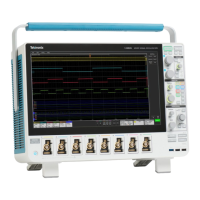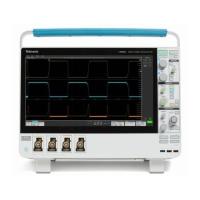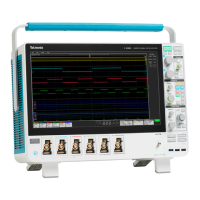Jitter 6 Sigma
Jitter 6 sigma is six times the RMS value of the edge jitter in the current horizontal units.
Jitter 6 sigma = 6 × (JitterRMS)
Noise Peak-to-Peak
Noise p-p is the peak-to-peak value of the noise of the top or base of the signal as specified by you.
To ensure accurate noise values, be sure to set the signal type to Eye when measuring an Eye signal.
Noise Pk-Pk = PToppk-pk or PBasepk-pk
Noise Root Mean Square
Noise RMS is the RMS value of the noise of the top or base of the signal as specified by you.
To ensure accurate noise values, be sure to set the signal type to Eye when measuring an Eye signal.
Noise RMS = PTopsigma or PBasesigma
Signal to Noise Ratio
S/N ratio is the ratio of the signal amplitude to the noise of the top or base of the signal as specified by you.
S/N Ratio = (Ptop – Pbase)/(PTopsigma or PBasesigma)
Duty Cycle Distortion
Duty cycle distortion is the peak-to-peak time variation of the first eye crossing measured at the MidRef as a percent of the eye
period.
DCD(sec) = 100% × TDCDp-p/(TCross2mean – TCross1mean)
Quality Factor
Quality factor is the ratio of eye size to noise.
Quality Factor = (PTopmean – PBasemean)/(PTopsigma + PBasesigma)
Measurement setup control window (More tab)
From the Measure menu, select Measurement Setup; then open the More tab.
Overview
Use this control window to set up the instrument for taking miscellaneous measurements.
To use
For information on the controls, click the buttons.
■
Measurements
■
Channel
■
Measure | Source
■
Ref Levels
■
Gating
■
Statistics
■
Snapshot
■
Histogram
Measurement setups
282 DPO70000SX, MSO/DPO70000DX, MSO/DPO70000C, DPO7000C, and MSO/DPO5000B Series

